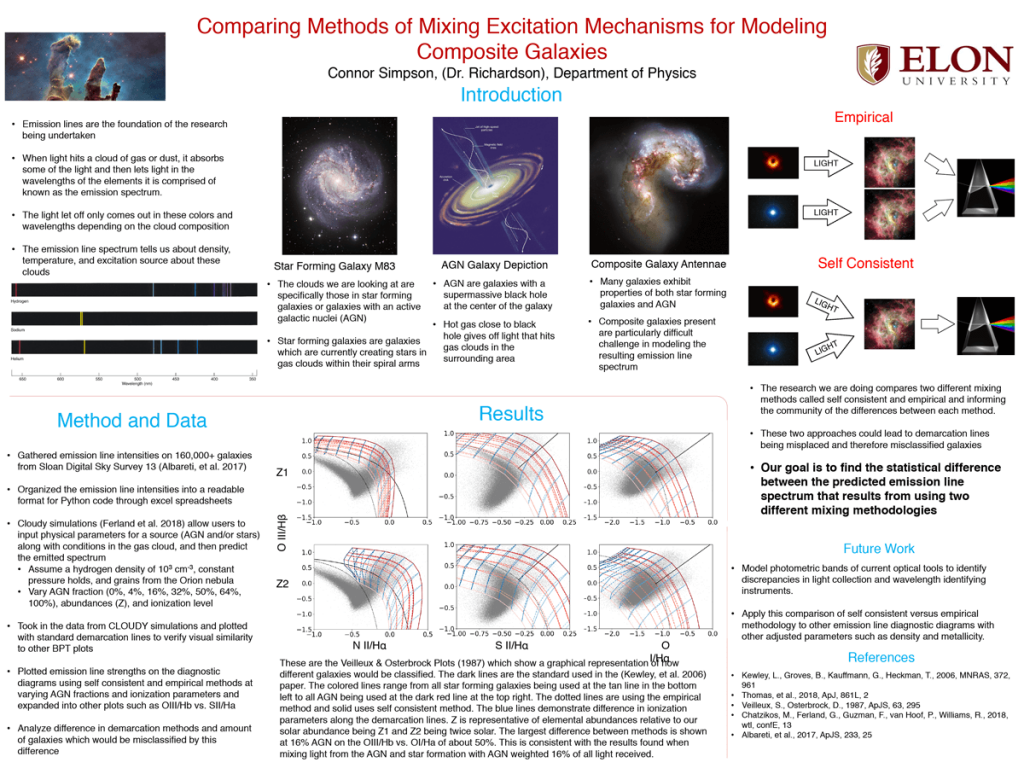Connor Simpson
Class of 2021
- Physics

Comparing Methods of Mixing Excitation Mechanisms for Modeling Composite Galaxies
Project Mentor:
- Chris Richardson, associate professor of astrophysics
Project Abstract
A spectrum is like a fingerprint for each galaxy that determines what elements are inside based on the light it gives off. By analyzing different segments of galactic spectra, we can tell whether a galaxy is star-forming or has an active galactic nucleus (AGN) with a supermassive black hole. There are other types of galaxies such as composite galaxies, which are thought to be a mixture of star-forming and AGN galaxies. These “mixed” galaxies can be modeled using either a self-consistent or empirical methodology, but a robust comparison between the two methods has yet to be carried out. The goal of this research is to investigate the difference between the predictions of self-consistent and empirical methods of modeling galaxies with both star-forming and AGN contributions, which could impact assessing how much of a role the AGN emission plays in a given galaxy. For our simulations using Cloudy, we vary four parameters: mixing fraction, hydrogen density, ionization level, and elemental abundance. We used galaxies from the RESOLVE survey which includes a volume-limited catalog of galaxies instead of mass-limited galaxies in the local universe. Previously, black hole mass was the most limiting factor as intermediate and stellar black hole galaxies were not being detected. The RESOLVE survey is able to detect dwarf galaxies with intermediate-mass black holes in our local universe. These galaxies have a low abundance of metals, similar to primordial galaxies from the early universe, yet can be clearly viewed from Earth. Our results show that varying the elemental abundances of the galaxies revealed larger changes in the area between demarcation lines than varying other parameters, but was still not statistically significant. The largest difference resulted from a mixing fraction of 16% at two times solar abundances, creating approximately a factor of two difference in the predictions from each mixing methodology. We conclude that either method can be used to classify galaxies except at the above metallicity and lower mixing fractions.
 Download Project Presentation
Download Project Presentation